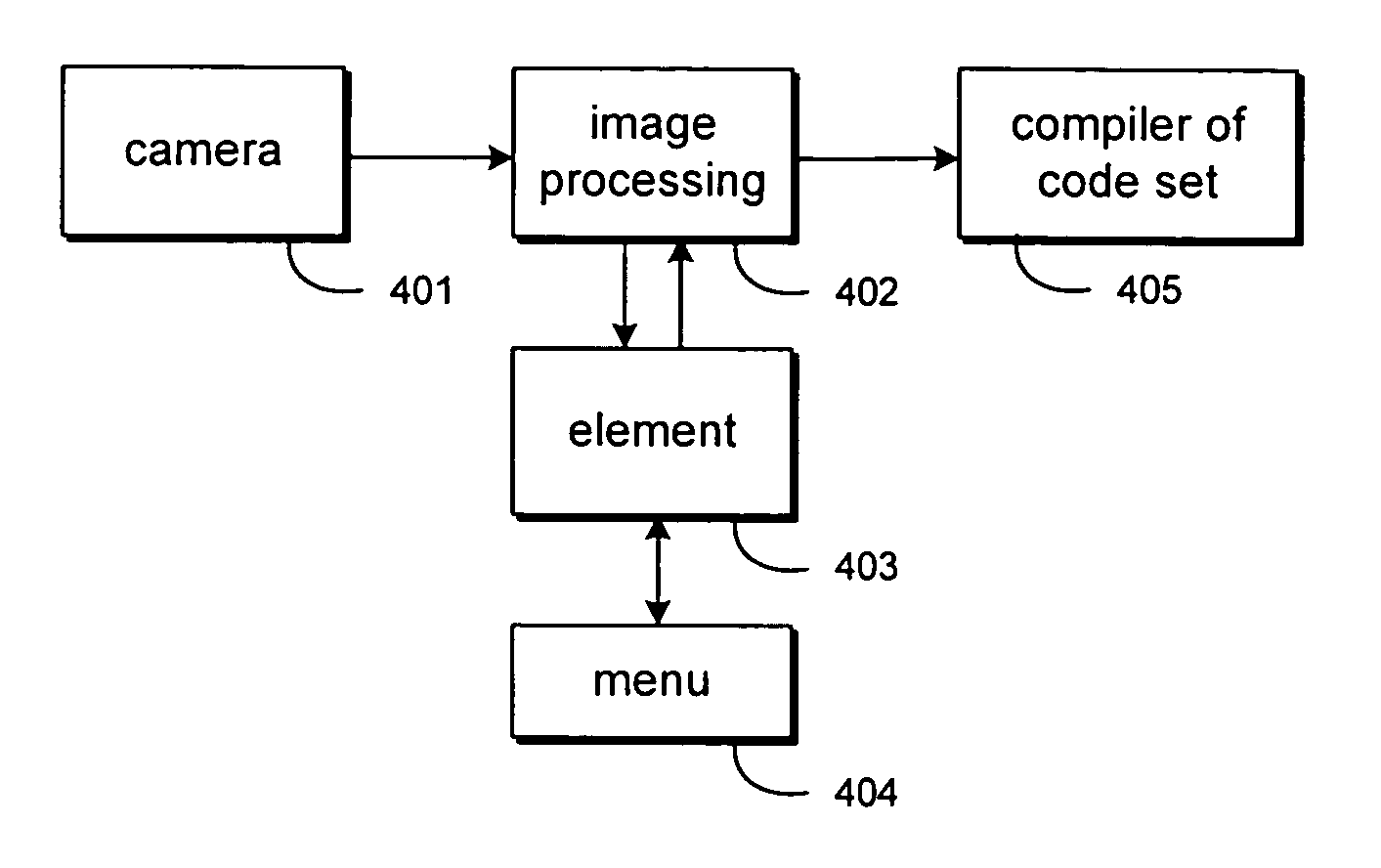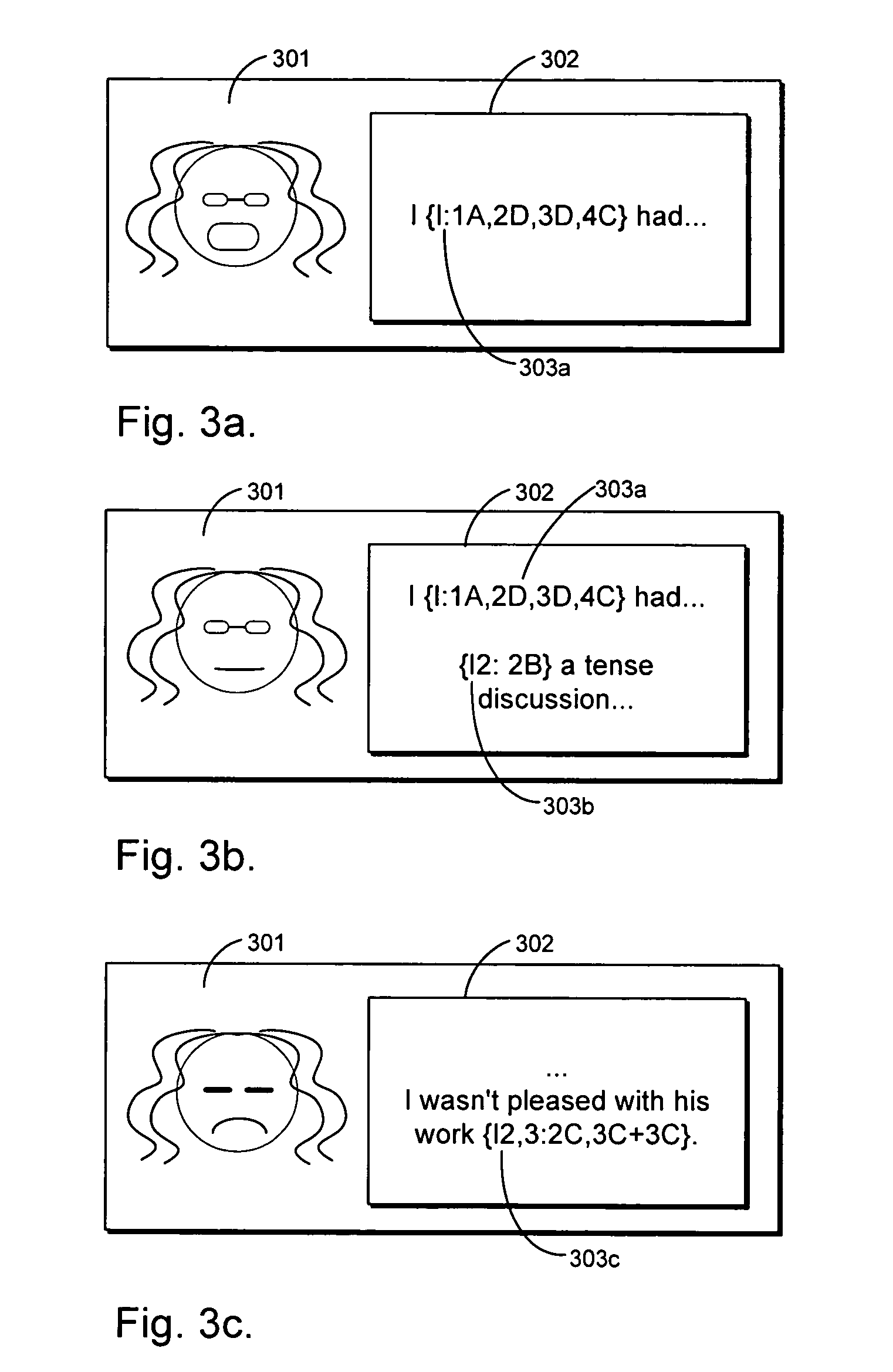Method and apparatus for conveying messages and simple patterns in communications network
a communication network and message technology, applied in the field of methods and apparatus for conveying messages and simple patterns in communications networks, can solve the problems of slowing down network traffic, burdening the memory capacity of the receiving terminal, and very limited message size of the mobile terminal, so as to achieve fast loading of patterns and small picture size
- Summary
- Abstract
- Description
- Claims
- Application Information
AI Technical Summary
Benefits of technology
Problems solved by technology
Method used
Image
Examples
Embodiment Construction
[0021]FIG. 1 shows a menu according to a preferred embodiment of the invention, which menu for the sake of example contains a few features for generating a pattern according to the preferred embodiment of the invention. According to this preferred embodiment of the invention, the menu contains elements of a pattern so that a desired pattern can be created by combining different elements. A pattern element is typically a discernible part of a pattern, such as a facial feature or facial shape, for instance. Each pattern element in the menu is associated with a certain code so that an element can be uniquely referred to by using the code associated with it.
[0022] In the embodiment depicted in FIG. 1 there are four rows numbered consecutively from 1 to 4, and four columns indicated by letters A, B, C, D. The pattern elements in the first row describe different facial shapes. Row 1, column A contains a round face 101a. Row 1, column B contains a broad face 101b. Row 1, column C contains...
PUM
 Login to View More
Login to View More Abstract
Description
Claims
Application Information
 Login to View More
Login to View More - R&D
- Intellectual Property
- Life Sciences
- Materials
- Tech Scout
- Unparalleled Data Quality
- Higher Quality Content
- 60% Fewer Hallucinations
Browse by: Latest US Patents, China's latest patents, Technical Efficacy Thesaurus, Application Domain, Technology Topic, Popular Technical Reports.
© 2025 PatSnap. All rights reserved.Legal|Privacy policy|Modern Slavery Act Transparency Statement|Sitemap|About US| Contact US: help@patsnap.com



